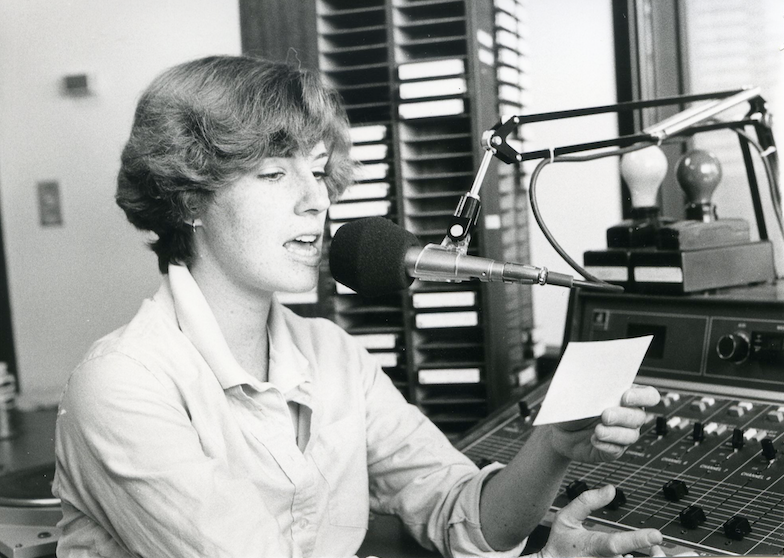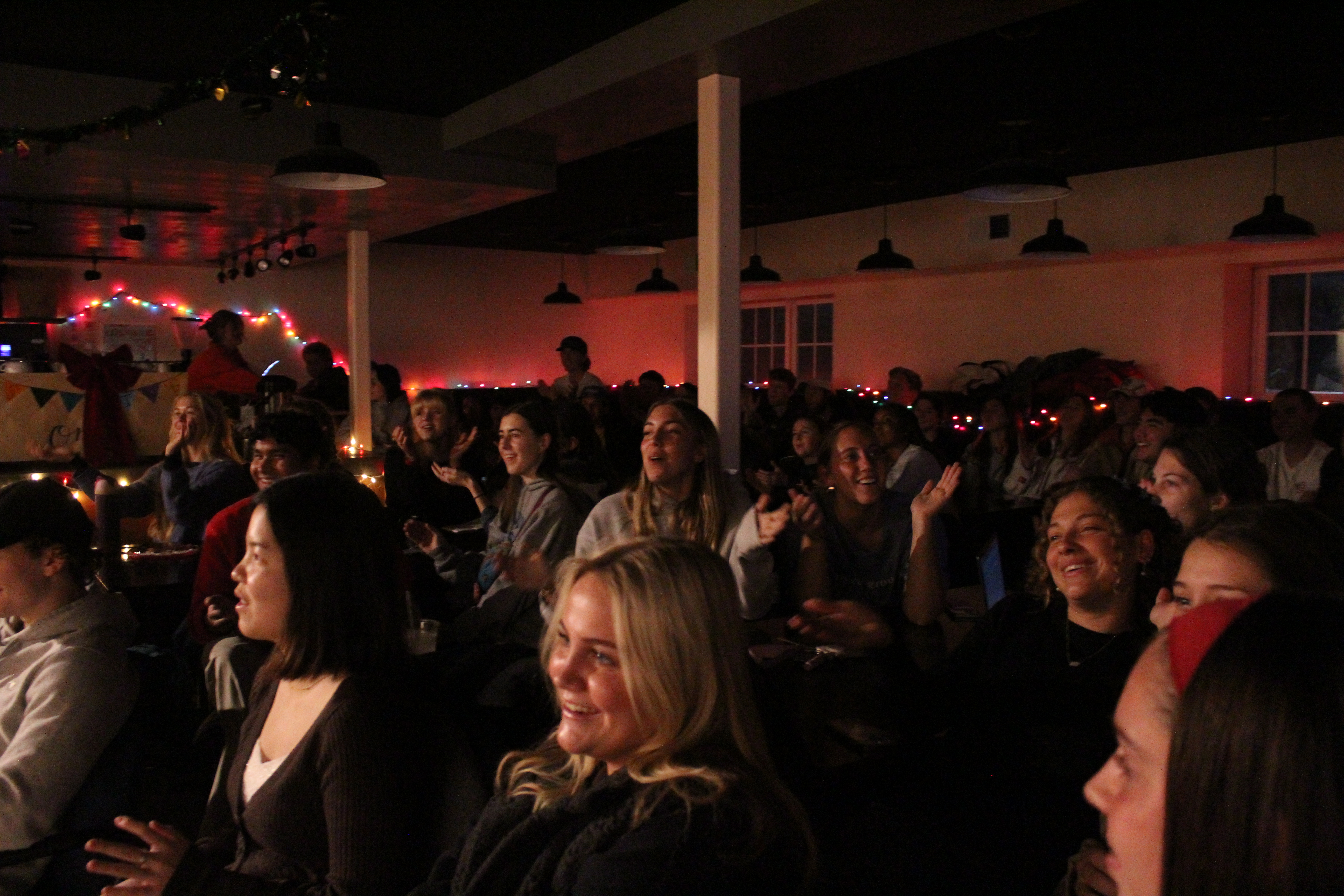![]()
Since the commencement of John Brown University in 1919, the study of communication has been ever-present on campus.
Within the first month of the university’s opening, students were using the on-campus printing press to create their first newspaper, The Southwestern. Since the university was just starting out, students filled most roles on campus, including the newspaper’s staff. The communication major continues to require vocational-type training for students in the major. John E. Brown, Sr., the founder and first president of the university, believed in technical and vocational training for students.
John Brown, Sr.’s vision for his college was one that “maintained both high academic standards and a robust vocational program to prepare students for the world of work,” according to Christ Over All, a history of John Brown University released in 2019 for the school’s centennial celebration.
John Brown, Sr., was a nationally known radio evangelist. Many benefactors of JBU, including Murray Sells and Armais Artunoff became acquainted and later gave money to the institution because they first heard John Brown’s voice and mission over the radio. Further, in the 1930’s he printed a monthly pamphlet called the John Brown University Bulletin, in which he would share the financial and equipment needs with donors, friends and alumni.
According to Marikit Fain, JBU Archives Coordinator, “We have had journalism basically since JBU opened its doors in some form or another.” As early as 1925, journalism classes were listed in the course catalog. Communication became its own department between 1983 and 1985. One program was degree-granting, radio broadcasting. A graduate in this program would receive a bachelor’s of science from the school of radio. Two other majors, journalism and speech, were also offered. Broadcasting stopped being listed as a major in 2005, and was replaced in some forms by the media production specialization in 2011.
Multiple major specializations for communication were launched in 2011 including digital journalism, public relations, radio/TV/web, social advocacy and multi-context media.
The Threefold Advocate started in 1937 as a student-run newspaper. Over the years, the nature of what The Threefold Advocate has covered has shifted from JBU dating and gossip columns to hard-hitting news pieces. The student-led newspaper has won many awards, especially through the Arkansas College Media Association.
The Threefold moved to online publication in early 2021 after nearly a century of printed newspaper. “The Threefold has become student writers willing to get into topics nobody else wanted to talk about,” Fain said. “You would find those articles being given space.” The Threefold has tackled a wide range of issues from the administration’s questions about allowing men’s facial hair in the 70’s to desegregation at JBU. In the early 2000’s, it reported on the administration covering up partying by student athletes.
The yearbook has been produced every year since 1926. The first name was JEBROCO, an acronym for John E. Brown College, but their name has since changed to The Nesher. For their work, students can still receive practicum hours, which are necessary for graduation in the communication department. Speech and Debate has also been under the wing of the communication department since the beginning of JBU.
Under the leadership of communication major and Threefold Editor Earl Larkins and former broadcast anchor Carl Windsor in the 1970’s, the communication department received a much-needed equipment update, including the installation of cable TV to “broaden student outreach.” Communication students would prepare and produce a news segment called Eaglebreak. During this time, prominent media members, such as former Tulsa newscaster Mike Flynn were drawn to JBU as professors to “carry on the founder’s goal of equipping others to use modern media in all its forms to share God’s plan of salvation.”
KLRC first broadcast in 1983 as a way to help train students in the actual practice and technique of radio production. It was located in the Learning Resource Center (LRC), hence its name. The LRC was the location of many broadcast studios, a computer lab and a TV studio, all available for student use. They would broadcast contemporary Christian music and syndicated preaching. In 1996, KLRC began 24-hour broadcasting and hired its first full-time employee. This marked a shift from student practicum hours to the full-fledged legitimacy that KLRC is known for today.
In 2001, KLRC was named radio station of the year by Christian Music Broadcasters. In 2013, KLRC was named the Marconi Award winner for Religious Station of the Year. In 2016, it was the most listened to radio station in Northwest Arkansas. According to the book Christ Over All, KLRC “is known for its capacity to move its listeners to acts of service, including its annual campaign to fill student’s backpacks, ‘pay it forward’ weeks, or diaper drives for Loving Choices Pregnancy Center.”
Before KLRC, JBU owned and operated KUOA, which John Brown, Sr., purchased in 1935 and moved to Siloam Springs from Fayetteville. In 1936, the “rod of God,” a new transmitter, was placed in Siloam Springs to extend the reach of KUOA. During World War II, KUOA aired an original show, Ozarks at War radio, which attempted to give “up to the minute” news reports for regional listeners.
In the 1940’s, KUOA became the first FM radio station available in Arkansas. One skilled radio student, Bruce Garda Biddle, helped run the operations of KUOA and later used his radio skills and knowledge to ferry ammunitions across the Pacific on the S.S. Lewis L. Dyche as the ship’s 19-year-old radio operator. In 1945, three months after he was killed in the war, Biddle’s mother pushed the first shovel in the ground for the building of the Cathedral Group, which was built “In the Memory of Our Boys.”
When legendary radio broadcaster Paul Harvey visited campus in 1988 to speak at a ribbon cutting ceremony for KLRC, he said, “A handful of committed Christians in the media today can change the world.”
The study of communication has always been present on campus, and the ability for students to learn the facets of communication was important to the founder of the university. He recognized outlets of communication as the greatest way to disseminate messages across the country. He used the radio as his means to fulfill the Great Commission up until the last few days of his life, according to a 100-year timeline produced by staff at JBU.
The Board of Trustees and the Presidential Cabinet voted in 2021 to get rid of the communication department, much to the dismay of their students. But many of the branches of the department will continue past the official end of the department in 2022. “The communication department has survived not being a department before, and it will survive not being a department again,” Fain said.
Photo courtesy of JBU Archives





